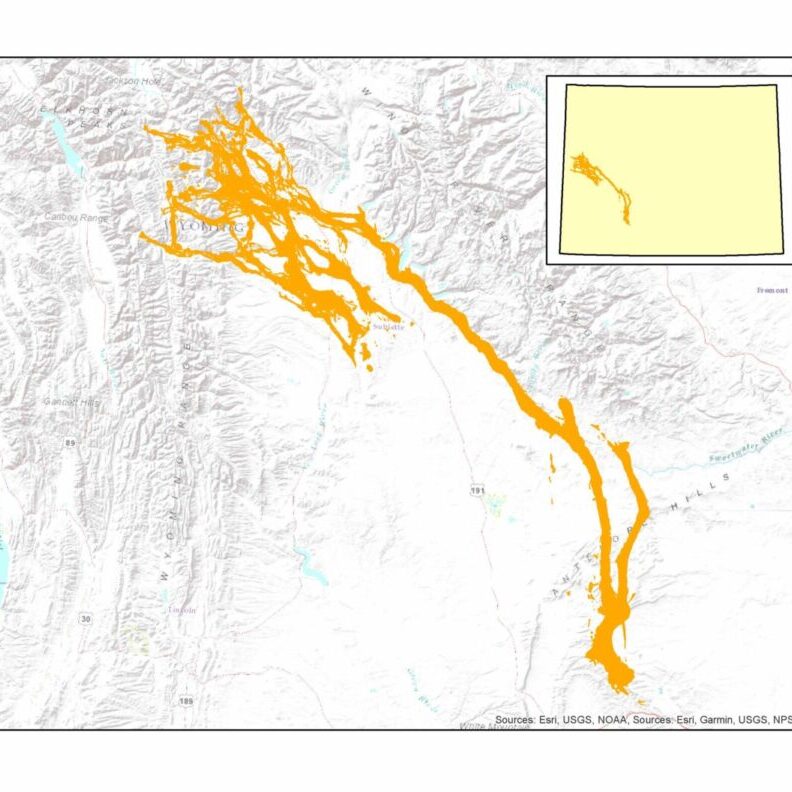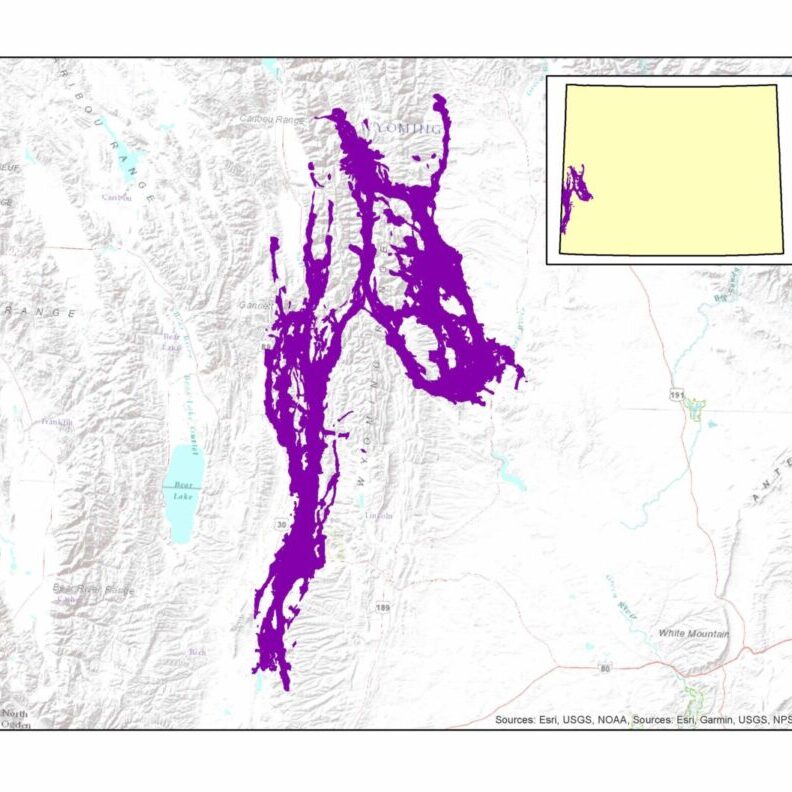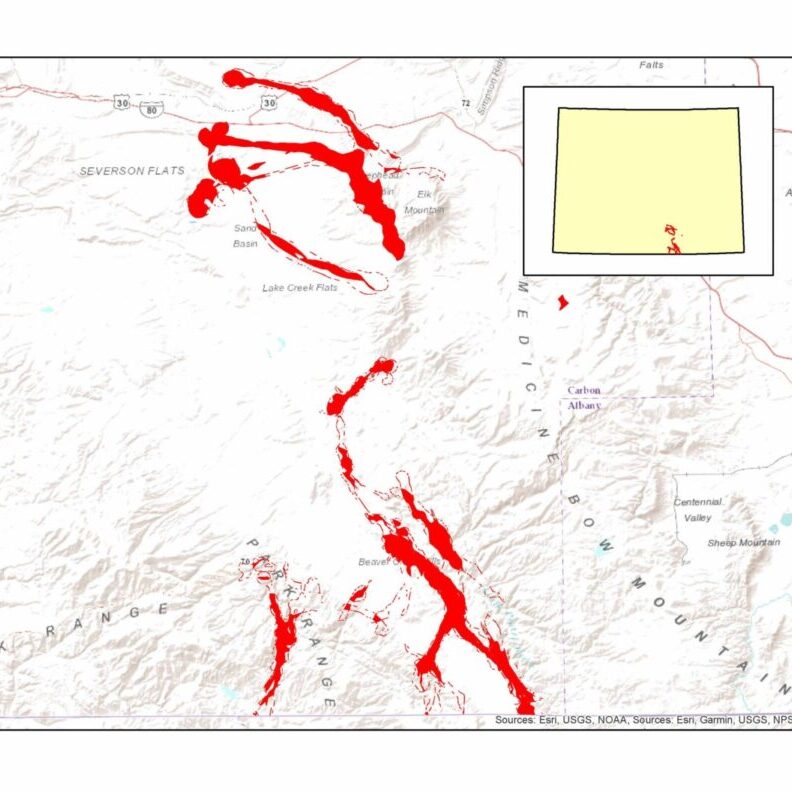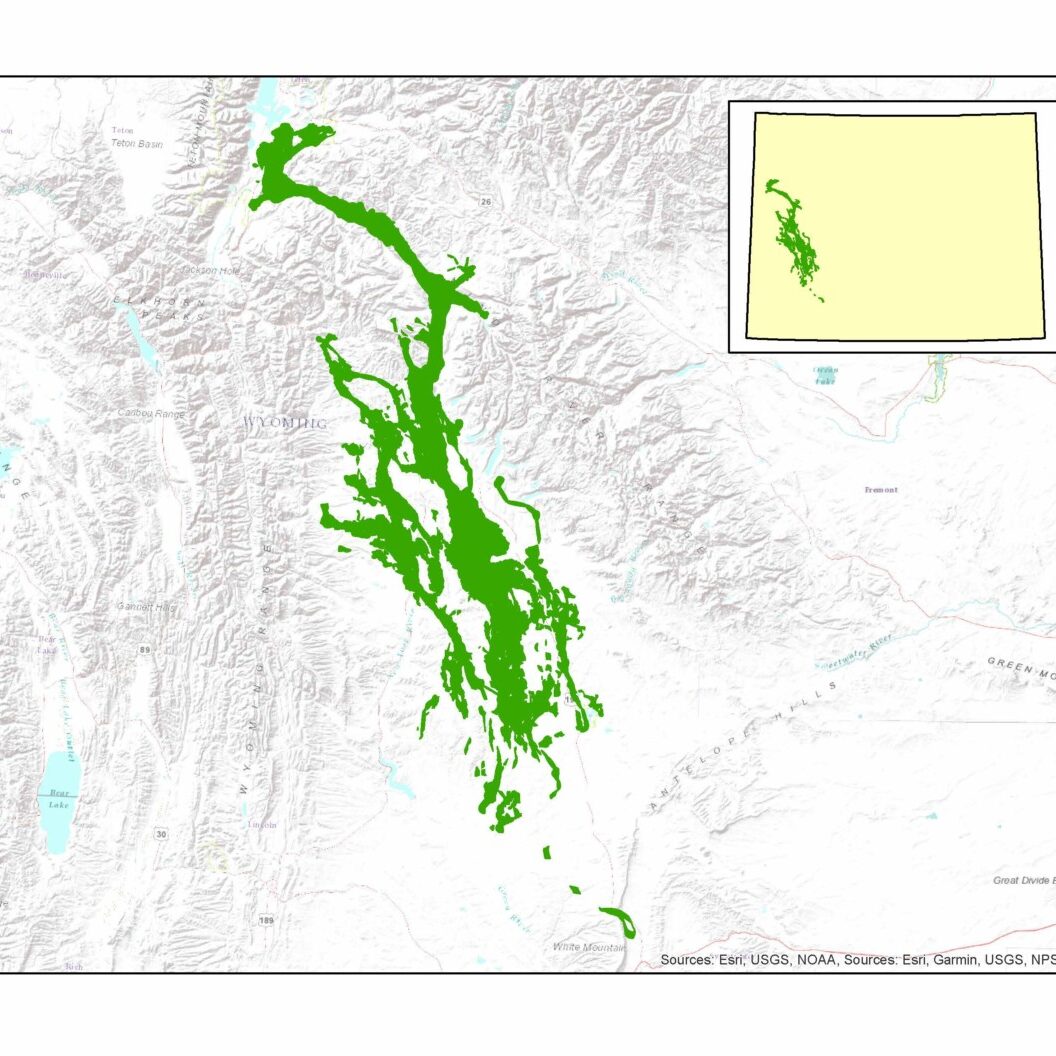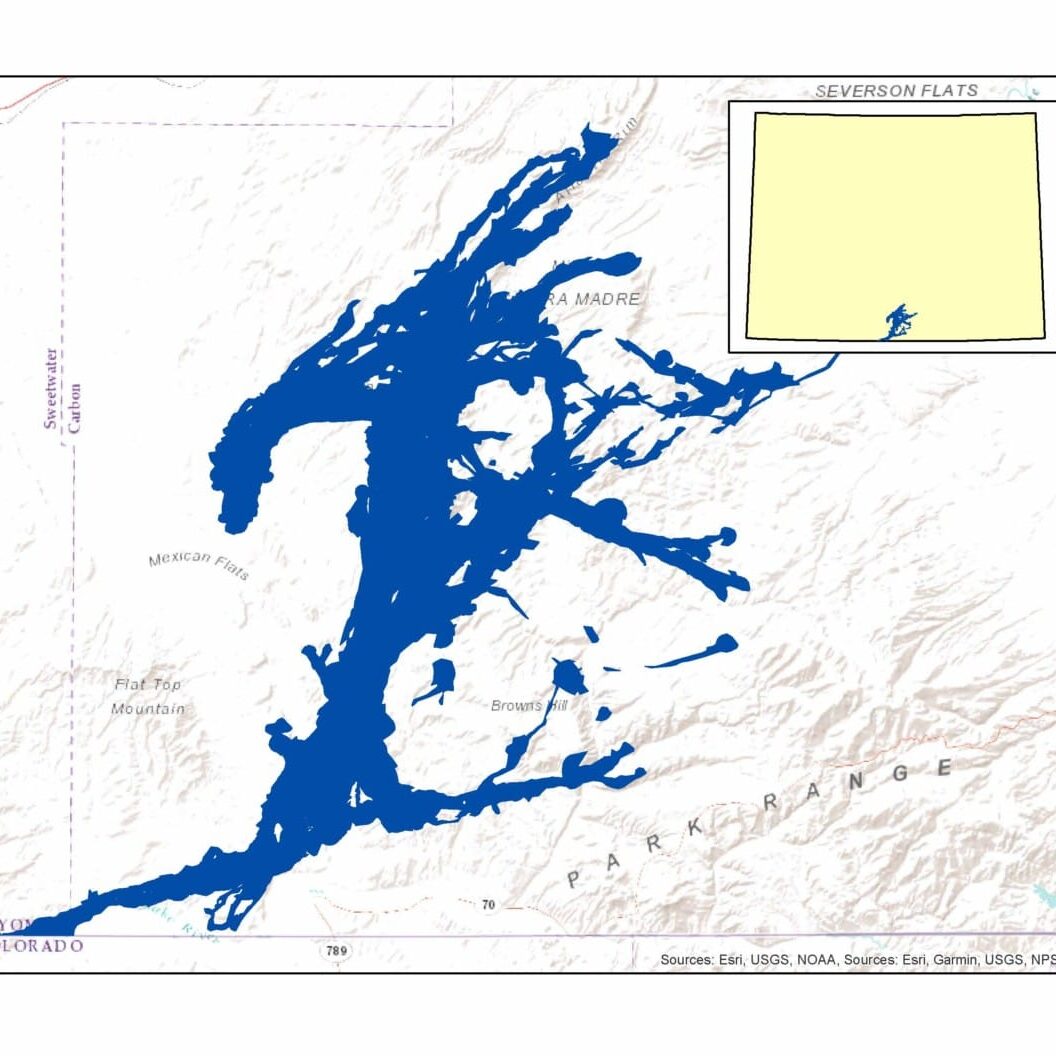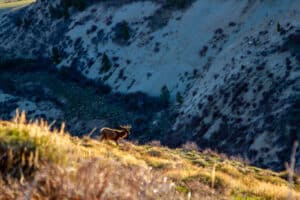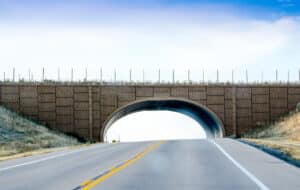
Wyoming’s ungulates – deer, pronghorn, elk, and moose- are on the move. Following patterns of weather, elevation, and food availability over eons has led to large groups of animals moving from low elevation areas in the winter to higher elevations in the summer. Spring migration offers animals the youngest, tenderest, and most nutritious plant growth at a time when extra energy is needed to produce the next generation. The reverse pattern allows the animals to minimize energy as they forage in deep snow conditions. These annual migrations are why Wyoming’s harsh winter landscapes can support the vast herds of ungulates we value today. The seasonal routes allow animals to move from summer to winter range and are critical to maintaining these herds.
Wild ungulates in this region have been following their migration paths for millennia. Today the potential impacts on these paths can impact the long-term health of these herds. Some issues are simple barriers, like fences. Others are more complex, like rural development, new roads, and energy development. These do not stop the animals physically but, alter the landscape to the extent few animals are willing to pass through. These semi-permeable barriers can also compromise stopover habitat; the rest stops on the migration routes animals use to refuel and rest along their journey. Bottlenecks, areas of migration routes where many animals pass through a very narrow band of habitat, also need protection. Disturbances in bottlenecks can put the entire migration at risk of being cut off.
The migration routes of ungulates across Wyoming are part of our natural heritage. They are part of what makes our state so wealthy in wild ungulates. Conserving these corridors while reducing and eliminating barriers to migration ensures that we will have healthy herds for the coming years and the next generation.
WHY DON’T ANIMALS MIGRATE SOMEWHERE ELSE?
Many animals, including ungulates, follow patterns of weather, elevation, and food availability moving from low elevation in winter to higher elevations in summer. This pattern, following young grasses and forbs, is called “surfing the green wave.”
In spring animals make use of the youngest and most nutritious plant growth. At this time extra energy is crucial to producing the next generation. The reverse pattern allows animals to minimize energy use while traveling in deep snow conditions. This movement pattern dictates a herd’s migration corridor. These are not point-to-point journeys but are vital habitat areas ensuring the survival of Wyoming herds. Animals spend almost 1/3 of their lives, when they are most vulnerable, on these corridors and pass this food knowledge to the next generation.
Current Migration Corridors of Interest
Latest Related News
Rock Springs RMP Amendment update
BLM reopens the Rock Springs RMP for additional input The Rock Springs area, located in the southwest part of the state is distinctly Wyoming, with rugged badlands and sagebrush expanses that extend seemingly endlessly into deep aspen groves. These vast landscapes support immense […]
Science Sunday: Deerlight Savings
We may spring ahead or fall back, but wildlife run on their own internal clocks. So how do these disruptions to our sleep schedule impact deer and other wildlife? Deer, and many other species, are crepuscular. That means they are not very active […]
From Miles to Milestones: Two Big Wins and the Road Ahead
From Miles to Milestones: Two Big Wins and the Road Ahead A few weeks ago felt like one of those rare moments when all the miles, meetings, and late-night strategy sessions finally paid off. First, the Wyoming Game and Fish Commission voted unanimously […]
What We Do To Help
Wyoming Wildlife Federation has a number of specific Programs that address this
issue directly. Click on a Program in the list below to explore it in depth.


